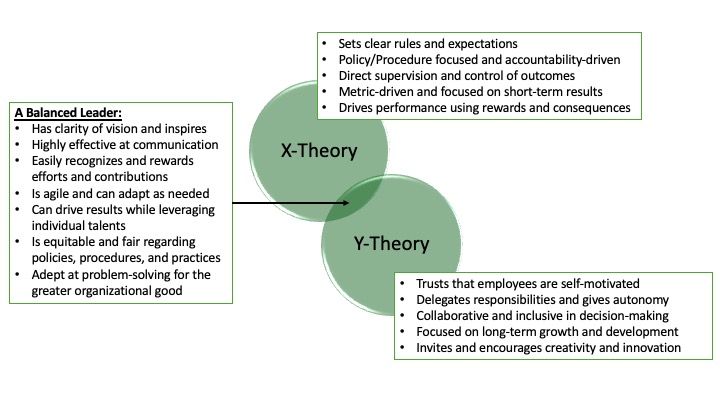The Balanced Leader
Leadership profoundly shapes workplace culture. While definitions of culture vary, it’s often about fostering respect, motivation, and enabling employees to do their best work. Companies invest billions annually in leadership development, recognizing the critical role leaders play in navigating change, from shifting regulations to evolving employee and business needs.
As consumer and workforce demands grow more complex, leaders must adapt. Central to this evolution is addressing leaders’ underlying beliefs about the workforce. In the 1950s, Douglas McGregor’s X-Y Theory highlighted two leadership mindsets: X-theory leaders view employees as unmotivated and require strict oversight, while Y-theory leaders see employees as self-motivated, thriving in supportive environments.
Most leaders embody a mix of these theories, influenced by their mental models. These beliefs impact engagement, productivity, and retention. Leadership approaches also define professional well-being, as a diverse workforce’s sense of belonging depends on leaders’ perceptions and actions.
X-theory leaders often exhibit traits like micromanagement, poor communication, lack of accountability, and a focus on control. While hands-on management has its place in certain situations, rigidity and distrust can harm morale and stifle talent. These managers may superficially embrace diversity but fail to foster a true sense of inclusion and belonging.
Conversely, Y-theory leaders prioritize trust, relationship-building, and growth opportunities. They embrace inclusion and belonging as drivers of success. They create a culture of respect and accountability while acting as mentors and coaches to optimize productivity and engagement. Y-theory leaders tend to be collaborative, transparent in communications, and trust that employees are inherently driven to do great work.
However, even self-motivated employees need clear guidance and direction to align with organizational goals. Leaders must find the right balance between X-Y theory behaviors to create a thriving workplace culture. Today’s and tomorrow’s leaders must strike a balance.

Here are some practical steps to take:
- Train leaders to explore and adopt mental models that engage diverse talent, focusing on key behavioral characteristics.
- Include leadership skills in succession management that identify agile, adaptable leaders who embrace and act on workforce changes.
- Equip HR partners to evaluate their mental models and advance policies that meet evolving workforce needs.
- Gather employee insights on leadership support needed to enhance their effectiveness and performance.
Employees often leave leaders, not companies—and it’s usually the talent you can’t afford to lose. Adaptation isn’t optional in today’s competitive labor market; it’s essential. Are your leaders ready?
